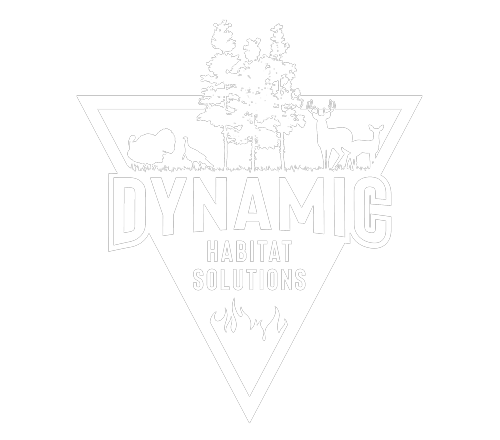What Are The 4 Types Of Ecological Restoration?
Have you ever wondered how we can help nature heal? Ecological restoration is the answer. It is about fixing the land, water, and everything living in those spaces to make them healthy and lively again. Now, let’s take a look at the four main types of ecological restoration and understand how each one plays a special role in caring for our planet.
Understanding Ecological Restoration
Ecological restoration helps nature bounce back when something goes wrong. This could be after a forest fire, when people cut down too many trees, or when a river gets polluted. We repair these damaged areas to bring back the natural balance. When we do this, plants and animals can thrive again.
Why Is It Important?
Restoring nature helps all living things, including humans. Healthy ecosystems provide clean air to breathe and clean water to drink. They help fight pollution and give us places to relax and enjoy. Moreover, when nature thrives, so do animals and plants, creating a beautiful, balanced world.
The Four Types of Ecological Restoration
There are four main types of ecological restoration. Each type focuses on different ways to help nature heal. They are: reforestation, wetland restoration, stream restoration, and invasive species removal. Let’s explore what each type means and why they are important.
Reforestation
Reforestation means planting trees where forests have been cut down or burnt. Trees are crucial because they produce oxygen for us to breathe and offer homes for many animals like birds and squirrels. When we plant more trees, we ensure that forests can grow back and continue to support life.
Benefits of Reforestation
- Habitat Restoration: Many animals rely on forests for their homes.
- Climate Control: Trees help cool the air. They store carbon dioxide, which helps reduce climate change.
- Soil Improvement: Tree roots hold soil in place, which prevents erosion.
Wetland Restoration
Wetlands are areas where water covers the soil, like marshes and swamps. They provide unique homes for plants and animals that live in or near water. Restoring wetlands involves cleaning up pollution, removing unwanted plants, and bringing back native vegetation.
Why Are Wetlands Important?
- Water Filtration: Wetlands clean water naturally by trapping pollutants and sediments.
- Flood Control: They act like sponges, absorbing excess water during heavy rainstorms.
- Biodiversity: Wetlands support a wide variety of life, including fish, birds, and insects.
Stream Restoration
Streams and rivers can become polluted or change course, affecting everything that lives in and around them. Stream restoration helps by cleaning up pollutants and repairing the stream’s path so that water can flow naturally.
Key Benefits
- Improved Water Quality: Clean water is essential for the health of plants and animals.
- Healthy Fish Populations: Streams with clean water attract fish and other water creatures.
- Erosion Control: Well-maintained streams reduce soil erosion along their banks.
Invasive Species Removal
Invasive species are plants or animals that do not belong in an area. They can cause harm by taking over the area and outcompeting native species. Removing invasive species helps native plants and animals survive and thrive.
How It Helps
- Protect Native Species: Ensures that local plants and animals have a chance to grow.
- Balance Ecosystems: Keeps natural communities stable and healthy.
- Conserves Resources: Prevents invasive species from using up all the water and nutrients.
A Balanced Approach
Every type of restoration supports and gives strength to ecosystems. By using all four types, we make sure that all parts of nature heal together. One type by itself helps, but combining them ensures that our natural world is rich and diverse.
Dynamic Habitat Solutions: Stewards of Creation
At Dynamic Habitat Solutions, we focus on fostering a strong, flourishing environment that benefits everyone. We are devoted to habitat restoration, reaching into our faith to care responsibly for the world around us. We specialize in helping aquatic environments by managing ponds and wetlands through advanced methods and tools, improving water clarity and ecosystem balance.
Our Commitment
- Expertise and Equipment: We use advanced tools like the Truxor T50 to handle sediment buildup and overgrowth.
- Comprehensive Care: Our passion for the environment drives us to provide unmatched service.
- Community and Nature: We strive to enhance alliances between people and the natural world, reflecting our dedication to stewardship and sustainability.
Conclusion
In conclusion, understanding and implementing the four types of ecological restoration is vital for keeping our world vibrant and healthy. Reforestation plants trees, making forests flourish again. Wetland restoration brings back unique habitats that help clean our water. Stream restoration ensures that flowing waters stay healthy and clear. Lastly, by removing invasive species, we protect and give space to native life.
By using these tools, we help revive nature’s life-giving powers. If you feel inspired to join this mission, consider reaching out to professionals dedicated to this cause.
Call to Action
For anyone interested in restoring and caring for natural environments, Dynamic Habitat Solutions is your partner. From wetlands to ponds and forests, they offer solutions designed to restore and renew. Reach out today for expert advice and help in bringing vitality back to our environment. Contact them at (850) 530-5619 or visit their website here.
Remember, when we restore nature, we not only improve the world around us, we take steps to secure a better future.
